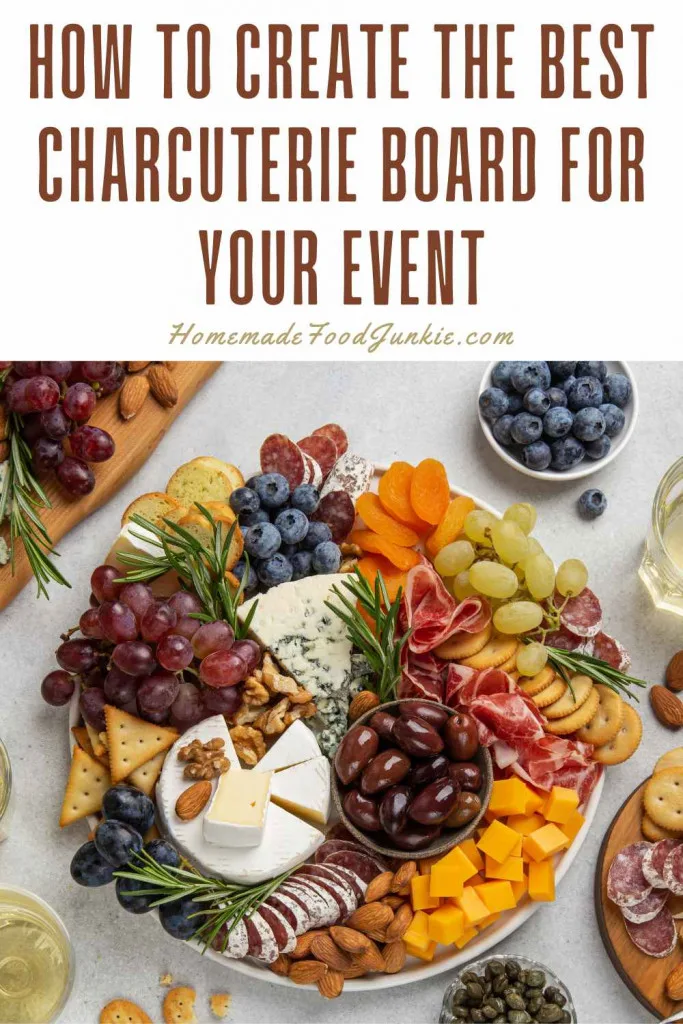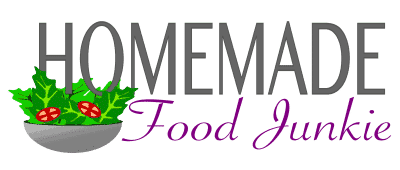Charcuterie boards have become a popular way to serve food at gatherings and parties in recent years, and for good reason: They are easy to assemble, customizable to suit a wide range of tastes, and offer a variety of flavors and textures that are sure to please.
What does Charcuterie mean literally? The term “charcuterie” refers to the art of preparing and assembling cured meats and other meat products, such as bacon, ham, and sausage. It comes from the French word “charcuterie,” which is derived from “chair,” meaning “flesh,” and “couteau,” meaning “knife.”
In traditional French charcuterie, the process of preparing and curing meats was typically carried out by a charcutier, who was responsible for selecting the cuts of meat, seasoning them with a variety of herbs and spices, and curing them through a process of salting, smoking, or drying.

The resulting products were then sold in a charcuterie, or a shop specializing in the sale of cured meats. Today, the term “charcuterie” is used more broadly to refer to any type of meat product that has been cured, smoked, or otherwise preserved, as well as the art of preparing and assembling such products.
If you are new to the world of charcuterie and are looking for some guidance on how to create a delicious and visually appealing board, read on.
What is a Charcuterie Board?
Before we dive into the specifics of charcuterie board assembly, let’s start by defining what a charcuterie board is. The term “charcuterie” refers to the art of preparing and assembling cured meats and other meat products, such as bacon, ham, and sausage.
A traditional charcuterie board offers a selection of cured meats, cheese, and other savory snacks that are served together on a board or platter.
These types of food boards or trays are often served as appetizers or snacks. They can be accompanied by various food items that compliment the board. Bread, crackers, pickled vegetables, and spreads and dipping sauces all make good companions to this style of charcuterie.
the key elements a board like this must have traditionally is cured meats and cheeses.
Charcuterie vs. Antipasto
Traditional Charcuterie includes a variety of cured and preserved meats, such as salami, prosciutto, and chorizo. It is often served as part of a larger meal or as a snack.
Antipasto is a traditional Italian appetizer that typically includes a variety of cured meats, cheeses, olives, and other small dishes. It is served before the main course of a meal and is meant to stimulate the appetite.
While charcuterie can be a part of an antipasto platter, it is not the same thing as antipasto. Antipasto platters often include a wider range of ingredients beyond just cured meats, and may also include items such as grilled vegetables, marinated artichokes, and roasted nuts. Charcuterie boards, on the other hand, are typically more focused on cured meats and cheeses, with a few accompaniments like crackers and bread. However….
Gone are the days when charcuterie boards were exclusively filled with meats and cheeses. Today’s charcuterie boards are often more diverse and include a variety of antipasto items, as well as fruits, nuts, and sweets.
This modern twist on the traditional charcuterie board is perfect for those looking to add a little something extra to their entertaining repertoire. But it occasionally does blur the lines between antipasto and charcuterie.
What Should be on a Charcuterie board?
The Classic meat Charcuterie board requires cured meats and cheeses. Here’s some more ideas for what to put on a traditional cheese and charcuterie board.
- Popular Charcuterie Board Meats: Cured meats are the cornerstone of any charcuterie board. Choose a selection of high-quality options. Some classic choices include prosciutto, salami, chorizo, and pancetta. Consider mixing and matching a variety of flavors and textures to create an interesting and well-rounded meat board.
- Selection of Cheeses: Cheese is an essential component of any charcuterie board, and there are many different types to choose from. We go into them further down in this post.
- Accompaniments: A charcuterie board is not just about the meats and cheeses – it’s also about the accompaniments that help to balance out the flavors and add visual appeal. Some classic companions include bread, crackers, pickled vegetables, and spreads. Consider including a mixture of sweet and savory elements, such as fruit, nuts, and chocolate.
What Are The Best Cheeses For Charcuterie?
There are many different types of cheese that can be included on a charcuterie board, and the best choices will depend on your personal preferences and the other ingredients you are serving. Here are a few types of cheese that are commonly found on charcuterie boards:
- Hard cheeses: Hard cheeses such as Parmesan, Pecorino Romano, and Asiago are typically made from sheep’s milk or cow’s milk and have a firm, crumbly texture. They have a strong, nutty flavor and are often shaved or grated over dishes as a finishing touch.
- Semi-hard cheeses: Semi-hard cheeses such as Cheddar, Gouda, and Monterey Jack are made from cow’s milk and have a smooth, creamy texture. They have a mild to medium flavor and can be sliced or cubed for serving on your board.
- Soft cheeses: Soft cheeses such as Brie, Camembert, and Chevre are made from cow’s milk, goat’s milk, or sheep’s milk and have a soft, creamy texture. They have a mild, tangy flavor and are often served with crackers or bread on a cheese board.
- Blue cheeses: Blue cheeses such as Roquefort, Stilton, and Gorgonzola are made from cow’s milk and have a crumbly texture with distinctive blue or green veins. They have a strong, pungent flavor and are often served in small amounts as a flavor accent on the board.
- Artisanal cheeses: Artisanal cheeses are made by small-scale cheese makers using traditional methods and high-quality ingredients. They can come in a wide range of styles and flavors, and are a great way to add variety and interest to your party platter.
When choosing cheeses for your appetizer board, include a variety of textures and flavors to keep things interesting. Consider pairing the cheeses with other ingredients such as meats, nuts, fruits, and spreads to create a well-rounded and balanced board.
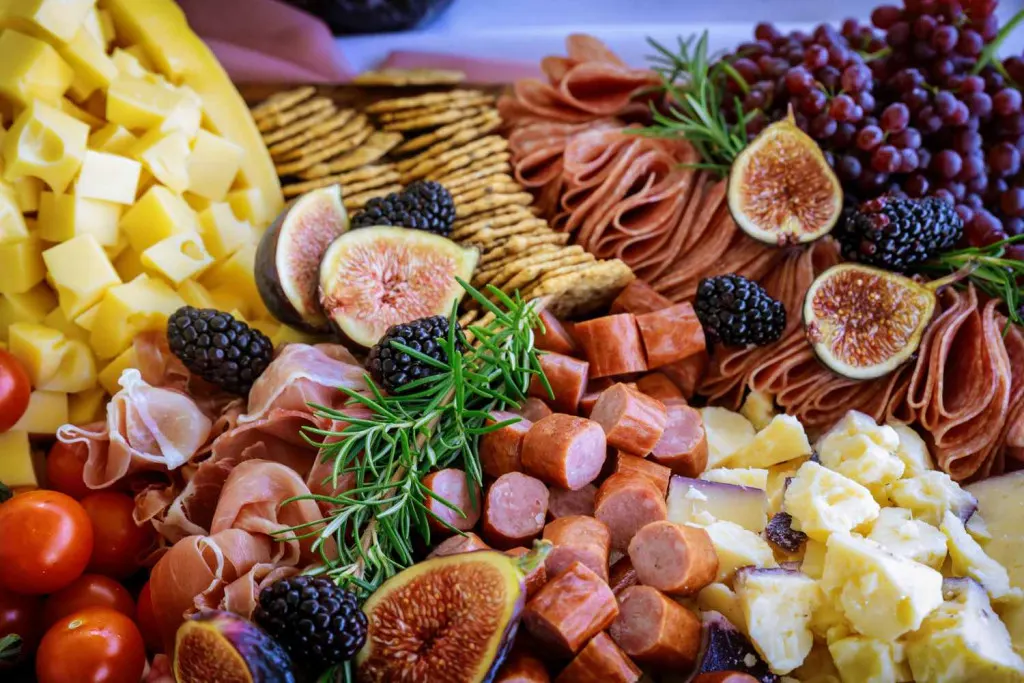
Make an Epic Charcuterie Board
To feed a large crowd you will need a large charcuterie board filled with an intriguing variety of foods that interests all your guest. This is the ‘something for everyone board’. With this board you can feed meat lovers, vegans, vegetarian appetites, and handle the allergy groups too.
Some people might prefer a board filled with a variety of meats and cheeses, while others might prefer a board that includes a mix of sweet and savory elements. This large selection of food should feed them all in style.
Here are a few tips for creating an interesting, attractive board with wide appeal.
- Choose high-quality ingredients: The quality of the ingredients on your charcuterie board is important, so be sure to select high-quality meats, cheeses, and accompaniments.
- Consider your guests: When creating a charcuterie board, think about the tastes and preferences of your guests. If you’re serving a mix of carnivores and vegetarians, be sure to include options for both.
- Mix and match flavors and textures: A successful charcuterie board should have a mix of flavors and textures. Consider including a variety of meats and cheeses with different flavors and textures, as well as accompaniments like crackers and flavorful breads.
- Pay attention to presentation: Your board should be visually appealing as well as tasty, so take the time to arrange the ingredients in an attractive way. Use a mix of colors, textures, and shapes to create a cohesive and appetizing display.
- Don’t overdo it: It’s better to have a little bit of everything than too much of any one thing, so be mindful of serving sizes when creating your appetizers board.
- More ideas on food for your board: Miniature pickles, pesto, dipping sauces, pickled peppers, sun dried tomatoes, olives, fig spreads, apricot preserves, whole grain mustards, honeycomb, and even dried Fruits, Crackers or small slices of bread and Jelly or Jam make great accents and additions.
Literally anything can go on your party food tray that adds to the basic charcuterie meat and cheese experience. The best charcuterie board is one that is tailored to your groups individual tastes and preferences.
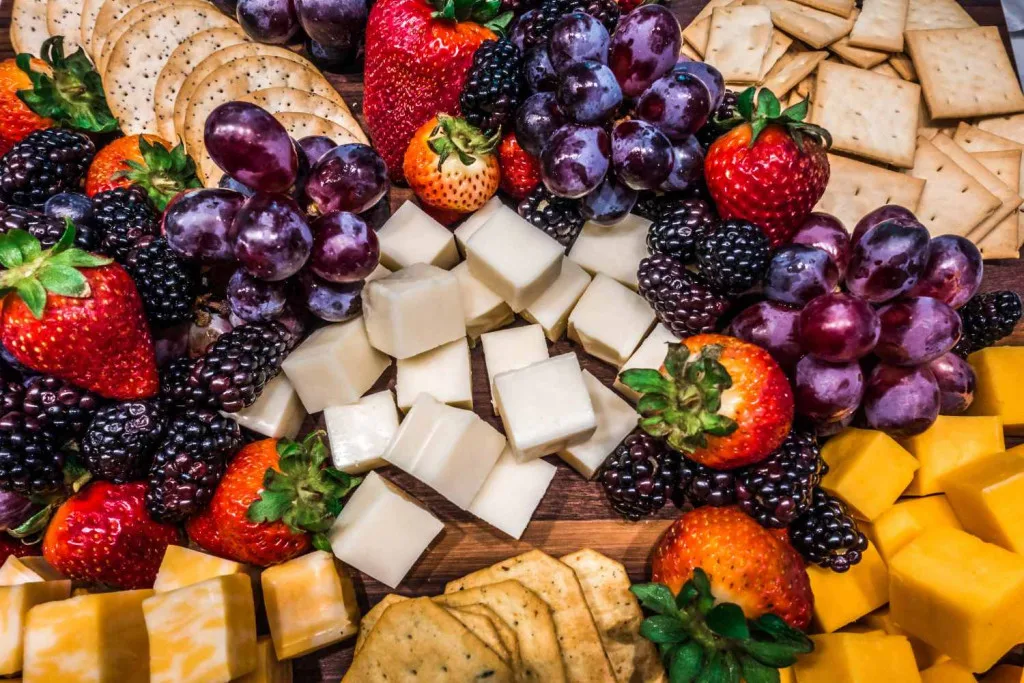
How to Assemble a Fruit and Cheese Charcuterie Board:
A fruit and cheese charcuterie board while technically not covered in the definition of charcuterie is still considered a type of charcuterie board. These boards focus on a selection of cheeses and fruits rather than cured meats. It is a great option for those who prefer vegetarian or lighter options, or for those who simply want to try something a little different.
- To assemble a fruit and cheese charcuterie board, start by selecting a variety of cheeses in different styles and flavors. Hard, semi-hard, and soft cheeses can all be included, as well as a mixture of cow’s milk, goat’s milk, and sheep’s milk cheeses.
- Next, choose a selection of fruit that will complement the flavors of the cheeses. Some good options include grapes, apples, pears, berries, and stone fruits.
- Arrange the cheeses and fruits on a large board or platter, along with any other accompaniments you might want to include, such as crackers, bread, or nuts. Garnish the board with herbs or edible flowers for an extra touch of color and flavor.
Sweets like chocolate, cookies, and candies can also be included, depending on the preferences of the people enjoying the board. The key is to choose a variety of ingredients that complement each other and create a visually appealing and tasty spread.
Charcuterie Board Ideas for Every Occasion
Whether you’re hosting a fancy dinner party or a casual movie night, there’s a food board option that will fit the bill.
Here are some board ideas on how to make a charcuterie board for every occasion:
- The Classic Charcuterie Board: This board is perfect for a casual dinner party or a simple get-together with friends. Fill it with a variety of meats (such as salami, prosciutto, and chorizo), cheeses (such as cheddar, gouda, and brie), crackers, and bread. Add some olives, pickles, and mustard for added flavor.
- The Gourmet Charcuterie Board: Take your charcuterie game to the next level with this board. Include high-end meats and cheeses, such as truffled salami and blue cheese, along with gourmet accompaniments like fig spread, honeycomb, and dried fruit. This board is perfect for a fancy dinner party or special occasion.
- The International Charcuterie Board: This board is all about showcasing flavors from around the world. Include a variety of meats and cheeses from different countries, such as chorizo from Spain, feta from Greece, and brie from France. Add international accompaniments like hummus, olives, and pickled vegetables to complete the theme.
- The Vegetarian Charcuterie Board: Just because you’re serving a meat-free board doesn’t mean it has to be boring. Include a variety of vegetarian-friendly options, such as grilled vegetables, roasted nuts, and a variety of spreads and dips. Add some vegan cheeses and crackers for added variety.
- The Sweet Charcuterie Board: For a unique twist on the traditional charcuterie board, create a sweet version. Include a variety of chocolates, candies, and other sweet treats, along with some fruit and spreads for balance. This board is perfect for a dessert party or a special occasion.
What Type of Charcuterie Board is Best?
There are many different types of boards that can be used for a charcuterie board, and the best option for you will depend on your personal preferences and the size and style of your event.
Ask yourself what do you want the board to do? Is it going to be a multiple use board like a repurposed cutting board, or do you entertain enough to make a dedicated charcuterie board system with dipping bowls and handy drawers that hold charcuterie tools the best option?
Some options to consider include:
- Wood boards: Wood boards, such as bamboo or acacia wood, are a popular choice for charcuterie boards. They are durable, easy to clean, and add a rustic touch to the presentation. I found this excellent Smirly Bamboo Board (made in USA) on Amazon.
- Marble boards: Marble boards are a elegant option for charcuterie boards. They are sturdy and add a touch of sophistication to the presentation. Here’s an amazon page of marble party boards of several sizes and styles.
- Plastic boards: Plastic boards are a practical choice for charcuterie boards, as they are lightweight, easy to clean, and can be used indoors or outdoors. Choose these when you’re taking the board outdoors or to a pot luck party. Here’s a good set of plastic trays on Amazon.
- Glass boards: Glass boards are a stylish option for charcuterie boards and can add a modern touch to the presentation. However, they are more fragile and may not be the best choice for outdoor events. Here’s a page of different boards, including a few glass boards on Amazon.
- Slate boards: Slate boards are a unique and elegant option for charcuterie boards and add a rustic minimalist touch to the presentation. They are durable and easy to clean, but may be more expensive than other options. Here’s one I LOVE on Amazon.
Ultimately, the type of board you choose will depend on your personal preferences and the style and theme of your event. Consider the size of the board you’ll need, the number of people you’ll be feeding.
How Big Should The Board Be?
The size of the charcuterie board will depend on the number of people you’ll be serving and the amount of food you plan to include.
Think about serving size: When making a charcuterie board, it’s important to consider how many people you’ll be serving. Make sure to have enough of each item to go around, but don’t overdo it – it’s better to have a little bit of everything than too much of any one thing.
As a general rule, a charcuterie and cheese board should be large enough to accommodate all of the ingredients without looking overcrowded or cluttered.
If you’re serving a large group of people, you’ll want to use a larger board to allow for plenty of space to display all of the meats, cheeses, and accompaniments. If you’re serving a smaller group, a smaller board will suffice.
To determine the size of the board you’ll need, consider the following factors:
- Get the right board for the Number of people you are serving: The number of people you’ll be serving is an important factor to consider when determining the size of the board. For a group of four to six people, a board that is about 12 inches by 18 inches should suffice. For a group of six to eight people, a board that is about 18 inches by 24 inches should work well. For a cozy movie night for two this mini charcuterie board is perfect!
- Amount of food: Consider the amount of food you’ll be including on the charcuterie board. If you plan to include a large variety of meats, cheeses, and accompaniments, you’ll need a larger board to accommodate everything. If you’re keeping things simple with just a few items, a smaller board will do.
- Space considerations: Think about where the charcuterie board will be displayed and the amount of space you have available. If you’re tight on space, you may want to opt for a smaller board or two to allow for plenty of room to move around. If you have plenty of space to work with, you can go with a larger board.
Ultimately, the size of the board you choose will depend on your specific needs and preferences. Just be sure to choose a size that will accommodate all of the ingredients you plan to include and allow for plenty of space to arrange them in an attractive way.
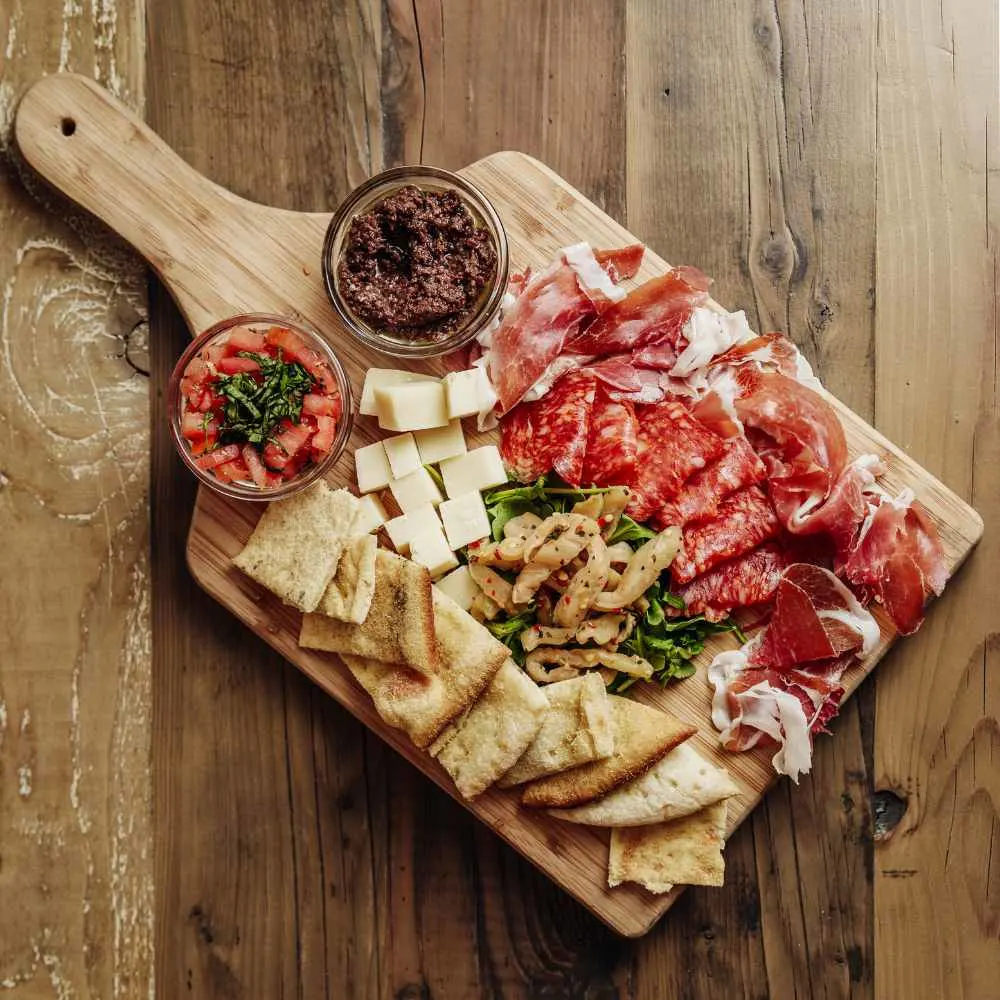
Here are a few tips for keeping a charcuterie board food safe:
Anytime we serve food at room temperature that sits out for several hours, food safety must be considered. These tips will help you keep a safe food board.
- Use separate cutting boards and utensils for raw and cooked meats to avoid cross-contamination.
- Keep all ingredients at the proper temperature. Cured meats should be served at room temperature, while cheese and other dairy products should be served cold.
- Avoid leaving perishable ingredients out at room temperature for extended periods of time. If you are serving a charcuterie board at a party, it is a good idea to replenish the board with fresh ingredients every hour or so.
- Wash your hands thoroughly before handling any food items.
- Use separate serving utensils for each type of ingredient to avoid cross-contamination.
- Avoid placing any raw or undercooked meats on the same board as fruits, vegetables, or other foods that will not be cooked before being consumed.
- If you are serving a charcuterie board outdoors or in a hot environment, consider using ice or cold packs to keep perishable items chilled.
By following these guidelines, you can help ensure that your charcuterie board is safe to enjoy. For more on safely hosting food events check out the food safety.gov site.
Summary
Charcuterie boards are often served as appetizers or snacks, and can be accompanied by various accompaniments such as bread, crackers, pickled vegetables, and spreads.
They are a popular choice for parties and gatherings, as they can be easily shared and offer a variety of flavors and textures. These party boards have moved well beyond the traditional cured meats and cheeses to encompass a wide range of ingredients. Tailor your boards to the preferences of the people enjoying them.
No matter what occasion you’re celebrating, there’s a charcuterie board option that will fit the bill. Get creative and have fun assembling your board, and don’t be afraid to mix and match elements to suit your taste. Happy entertaining!
More Delicious Ways To feed a Crowd:
All these appetizers are delicious, easy to make and well tested for parties. Enjoy!
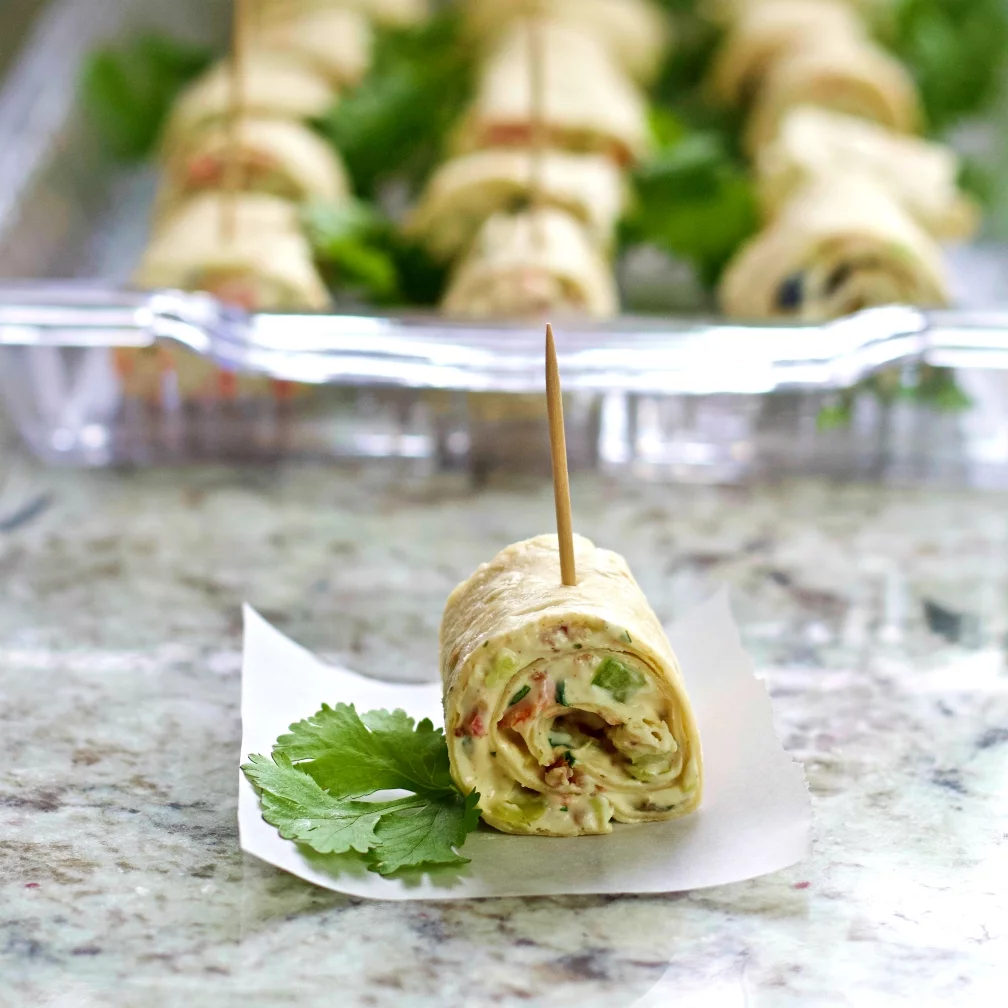
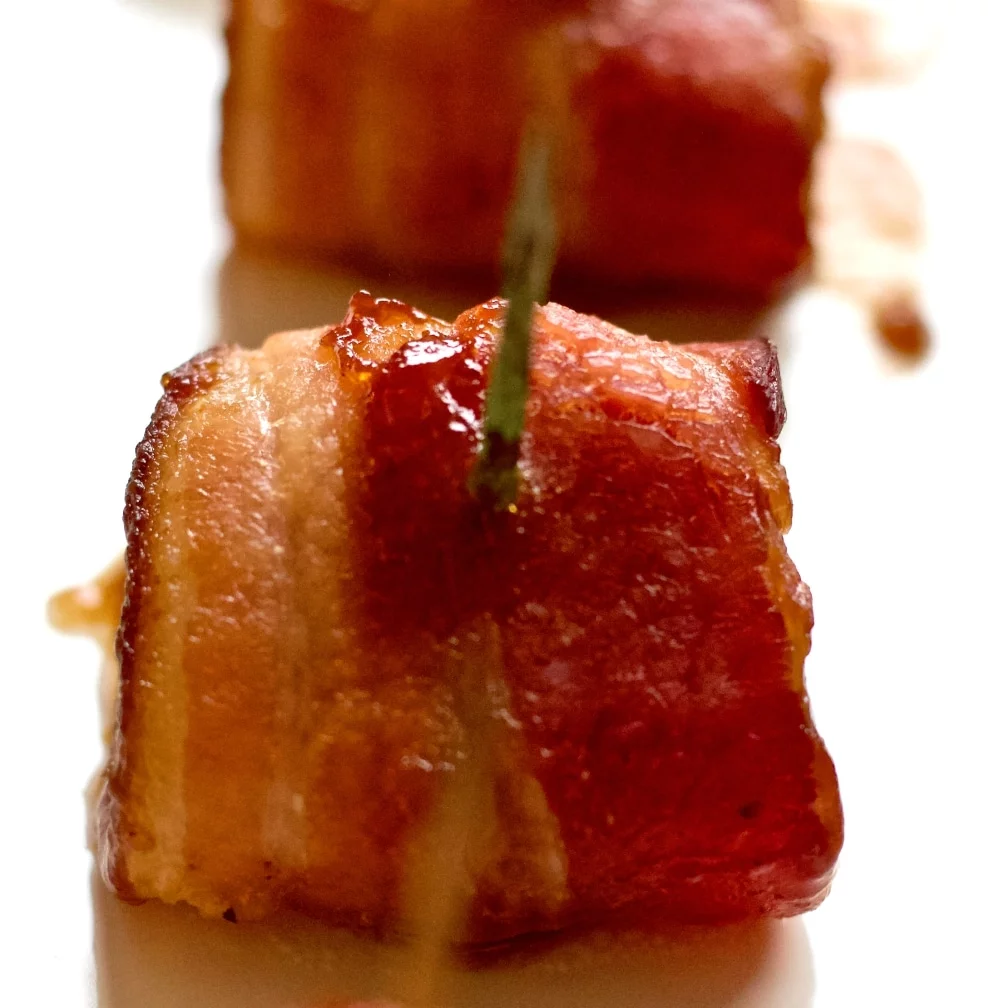
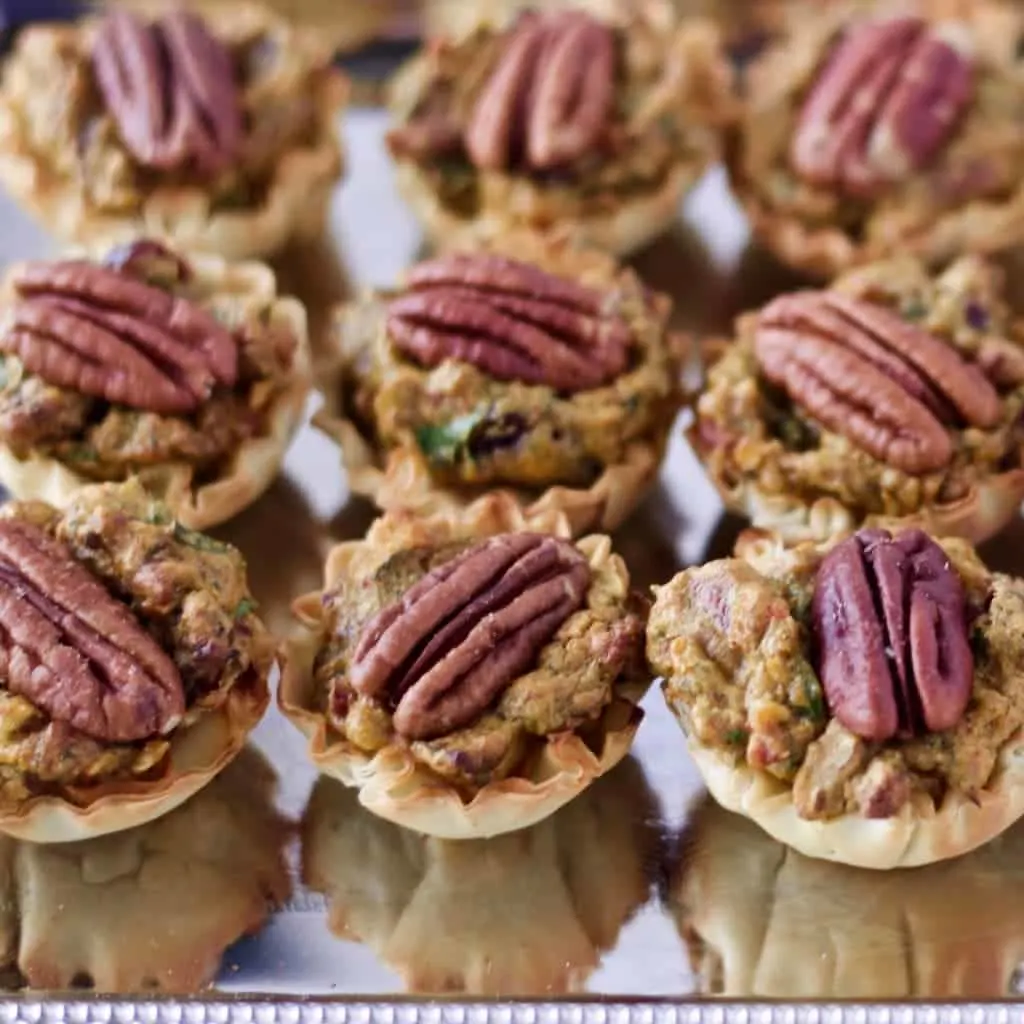
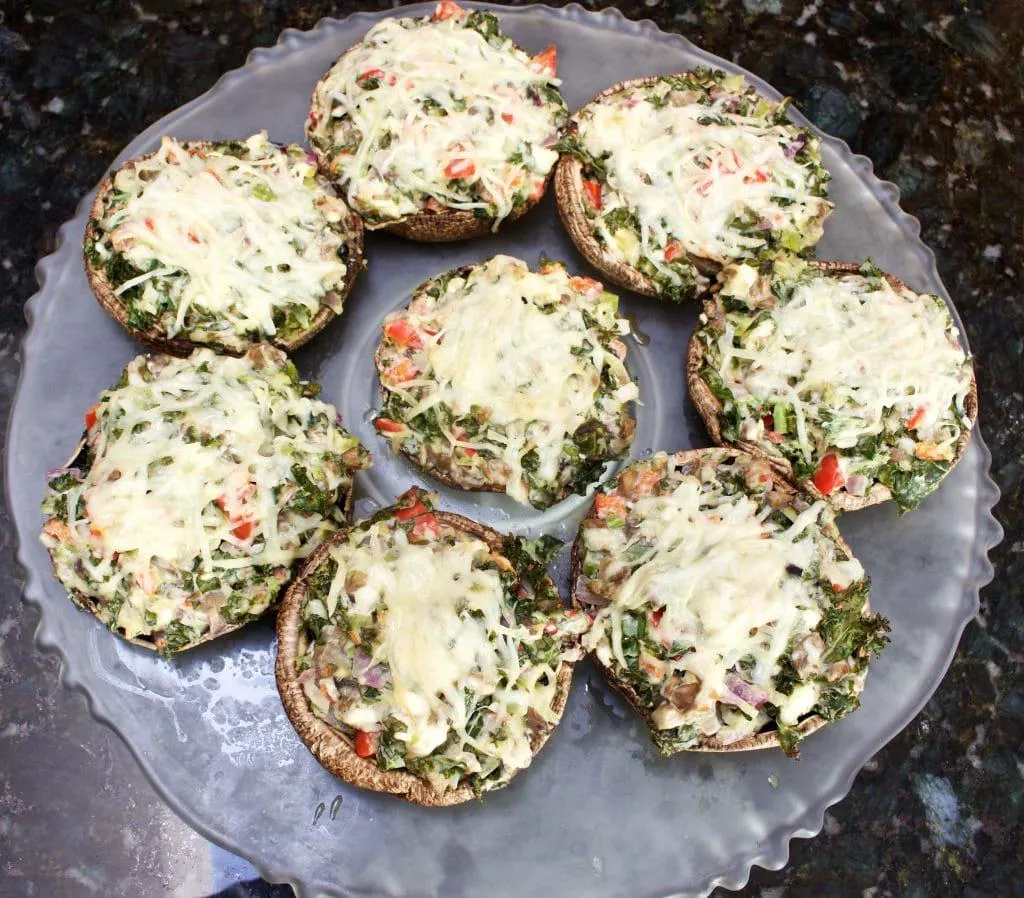
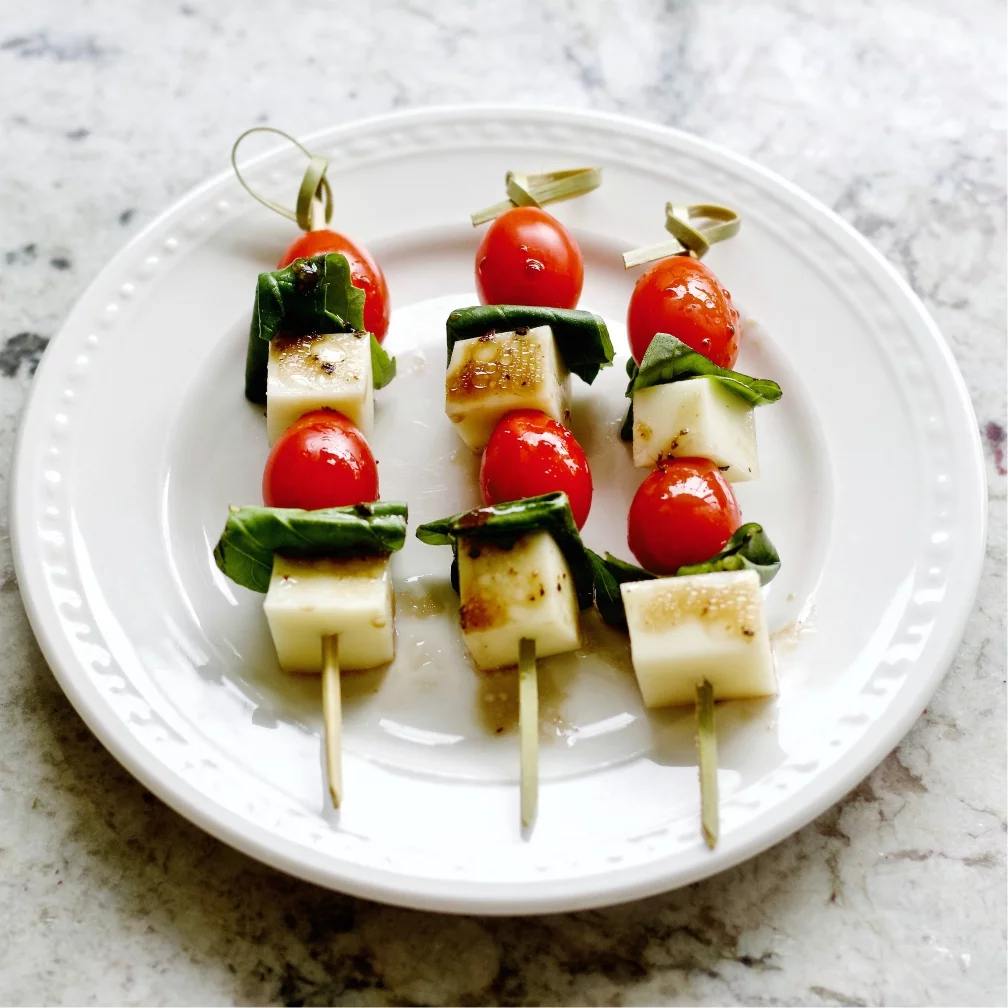
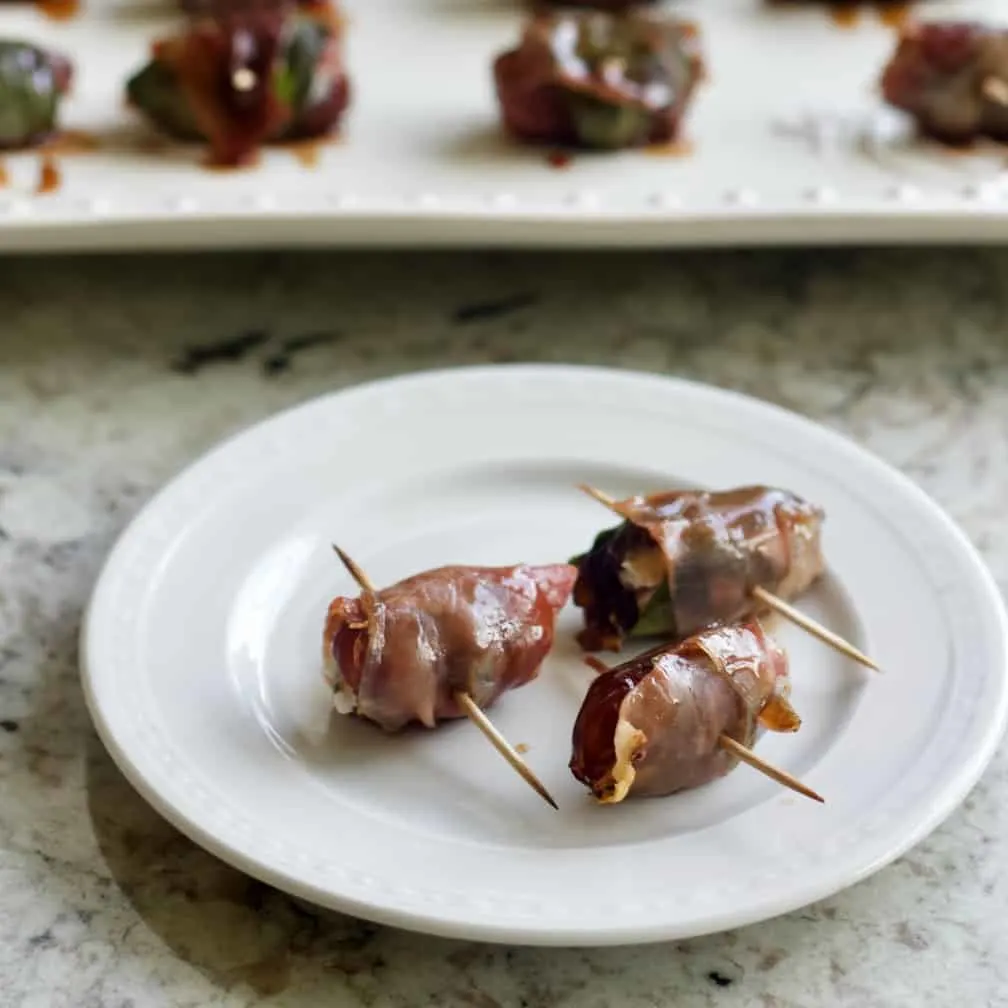
Follow Us:
We enjoy meeting you on our social networks. Follow us on Facebook, Pinterest, Instagram . Tag us with your pictures of our recipes and comment on how it went for you. We would love to see what you do with them.
We often like, comment and share your posts of our recipes on our daily Instagram stories.
Ask questions and rate the recipe in the comments section below. Please share what you did with this recipe. We are always looking for more and better ways to make homemade food. Other cooks love your ideas!
Recent Posts:
